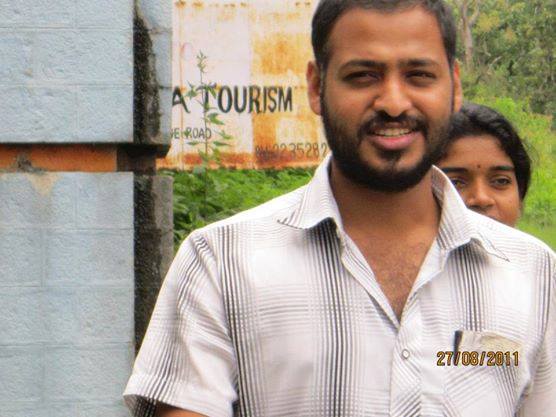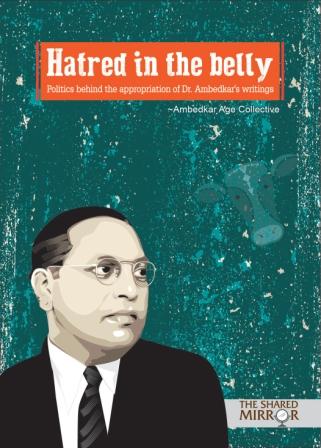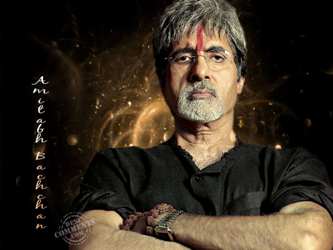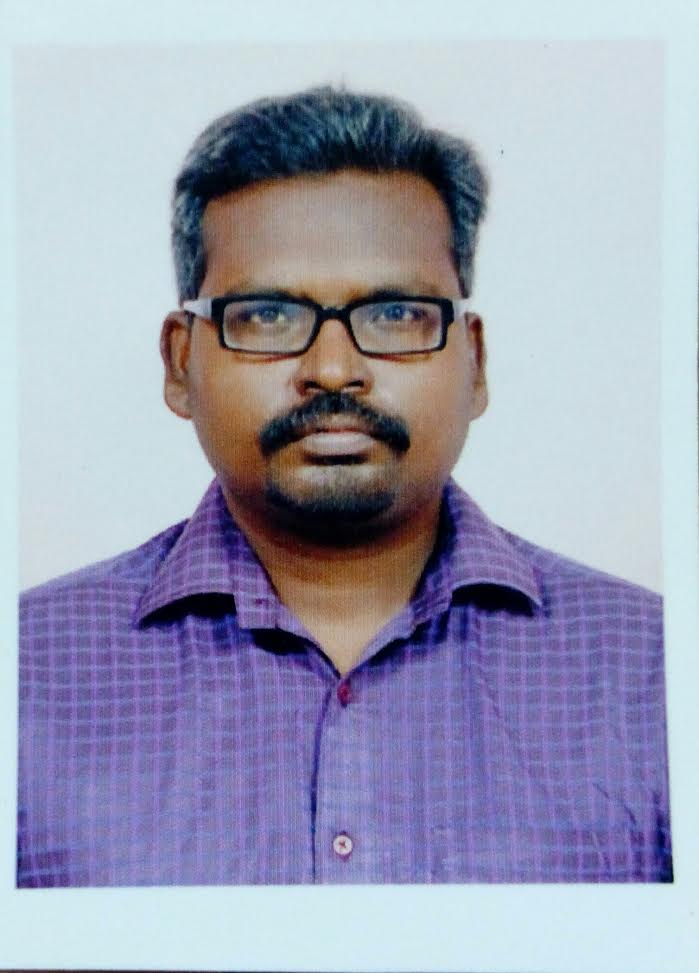Nidhin Sowjanya
Continued from here.
 The political and historical trajectory of the Brahminical Hindu domination that was traced in the last part is found to be deeply prevalent in almost all spheres of society. This part attempts to highlight how the Brahminical Hindu power is displayed, both brazenly and subtly, in our day-to-day lives. Today when most social spheres are controlled by corporates, it’s not a surprise to find that a study conducted on the top 1000 companies (in terms of total assets) in 2010 revealed that 92.6% of the corporate board members are constituted by upper caste Hindus (Brahmins 44.6%, Vaishyas 46%)22 and these corporates wield huge influence among the state and the various civil-society institutions, especially media and academic institutions.
The political and historical trajectory of the Brahminical Hindu domination that was traced in the last part is found to be deeply prevalent in almost all spheres of society. This part attempts to highlight how the Brahminical Hindu power is displayed, both brazenly and subtly, in our day-to-day lives. Today when most social spheres are controlled by corporates, it’s not a surprise to find that a study conducted on the top 1000 companies (in terms of total assets) in 2010 revealed that 92.6% of the corporate board members are constituted by upper caste Hindus (Brahmins 44.6%, Vaishyas 46%)22 and these corporates wield huge influence among the state and the various civil-society institutions, especially media and academic institutions.
There was a survey conducted in 2006 to understand the social profile of the so-called national media. The survey with a sample of more than 315 senior journalists in 37 Hindi and English newspapers and television channels in New Delhi (national media) found that Hindu upper caste men who form just 8% of the Indian population, hold 71% of the top jobs in the national media. If men and women are taken together, Hindu upper castes who form 16% of Indian population account for 88% of the top jobs in which 49% are Brahmins who just constitute above 4% of the population. OBCs who constitute over 41% of the population account for just 4% of the top jobs, Muslims who constitute 15% of the population account for just 3% of key decision makers and there is not a single representative from Dalits & Tribals who account for 25% of the population. Women are also very low in numbers compared to their population and among the women who hold the top jobs are majorly from the upper castes. There is not even a mention about North East & LGBT community in the survey 23.
It is no surprise then why there would be a very evident reporting bias in the mainstream media marginalizing the voices of the subaltern sections except for demonizing them or stereotyping them with false-negative images. It cannot be repeated often enough how the upper caste middle classes dominated Anna Hazare movement, or the Nirbhaya case, both were covered with such zeal while other rapes and sexual violences on Dalit women or minority women either never get reported or are reported in the most casteist manner24. Siddharth Varadarajan, a former editor of The Hindu cites an experience in his career where a report of discimination against Dalit students who were ghettoized in a hostel was suppressed for several days and was finally granted some insignificant space after many days. This happened when the media gave 24X7 coverage to upper caste Hindu students’ protests against reservation at AIIMS25.
The latest example of this instance is the complete blackout of reporting on the 80 Dalit families of Bhagana village, Haryana, protesting for over two months at Jantar Mantar in Delhi to get justice for the rape of four girls. The same Jantar Mantar where Anna Hazare and the Nirbhaya protests occurred and were widely covered26. The biased media reporting often demonizes the subaltern sections as criminals and terrorists, especially the reporting of terrorist activities trying to pin it on Muslims even in the absence of any evidence while terrorist activities of Hindu right wing are almost never reported, or inaccurately portrayed (hate crimes etc.) despite enough evidence to prove otherwise27. Similarly, another survey was conducted to find the social profile of those in positions of power in Allahabad – press club, university faculty, bar association, commanding posts in trade unions, NGOs, media houses, other public institutions by collecting more than 1000 samples. The results showed that the upper castes who account for 20% of UP’s population held 75% of the positions of power and influence among whom Brahmins and Kayasthas alone have more than 50%, more than 4 times their share in population28.
Poster found at hinduexistence.org – an extension of their Love Jihad propaganda
Indian Cinema and the Ideal Indian or Brahminical Hindu citizen
A civil society institution that plays a major role in entrenching the Hindutva hegemony is cinema. It is so mass oriented and popular among all sections of society that the portrayal of various communities furthers or creates new biases in the popular psyche. Indian movies – from Bollywood to various regional movies – all have a fundamental mix of soft and extreme Hindutva, with very few movies trying to expose the Indian state under Hindutva hegemony or portraying the perspectives of the subaltern sections. The stereotyping of the marginalized sections as violent beings- criminals, terrorists, immoral elements29 – all help in pushing these communities to the periphery of the nation’s imagination.
Gadar, based on a partition love story of Sikh-Muslim couple, which brought out Hindu nationalism with extreme anti-muslim emotions was a big hit
Meanwhile, the upper caste Hindu is projected as the ideal citizen who is the carrier of the Indian (i.e. Brahminical-Hindu) values. The main protagonists of the majority of Indian movies are upper castes even in films supposedly based on liberative or radical themes. In different regional languages, the dominant upper caste sections in those regions take on the mantle of the ideal (brahminical) individual. A critical and thorough analysis of most of the movies shows strong anti-Muslim themes underlying them and even in the supposedly non-political movies this sentiment is found in subtle yet strong underlying tones30. A study with a qualitative analysis of famous Indian movies in the last decade shows that 75.60% of the movies show Muslims in a negative manner while just 12.20% show Muslims in a positive manner31. Even the question of caste that plays the most significant role in the India society is always casually ignored or bypassed even in ostensibly socially-oriented movies32.
The movie shows the outright caste-feudal hegemony of an erstwhile ruling clan that refuses to yield its hegemony in a modern democratic society
Social relations are often reduced to the binary positions of poor-rich thereby suppressing all complexities of caste and identity. Moreover the presence of Dalits, Tribals and backward castes among other religions in prominent or leading roles is very rare33. Even the leading artists from other religions are predominantly from the upper castes in those religions and even they face embarrassment of the anti-minority psyche so deeply present in the public consciousness. This only gets changed if they also morph themselves into images palatable to the upper castes.
Fanaa was released with much fanfare announcing a Kajol comeback but camouflaged the liberal-Hindutva view that all muslims are not terrorists but all terrorists are muslims
Apart from the portrayal of the marginalized communities in a negative light, the upper caste Hindu values, traditions, symbols and lifestyles are depicted as Indian in line with the Hindu nationalist consciousness that has been the foundation of India. Harish Wankhede writes about this in Tehelka:
“In our films, the depiction of Dalit, OBC or even Muslim characters are mostly attached in the story as a second or third fiddle to the main lead, whereas in most of the stories the protagonist possesses a name attached with an overt upper caste identity. The unchallenged presence of an upper caste hero as the representative voice of common Indians hides more than what it reveals. As the main character possesses a specific caste background and identity, the story thus naturally revolves around the sentiments of the protagonist. You change the social identity of the character you will get a different narrative. Also, our films unapologetically celebrate the cultural symbols of the upper caste elites as national and hide the reality that cultural values are distinctively plural and regionally located”34.
Rather than dealing with the complex identity issues of marginalized communities, a revivalist project is underway by bringing explicit feudal upper-caste patriarchal images and protagonists endowed with super-human heroism and projecting them as saviours with Muslims, Dalits or backward castes as the negative characters in many of the so-called mass-market movies in Bollywood and in regional cinema, particularly in many of the South Indian movies.
Bulandi celebrates feudal-patriarchal-upper caste hegemony in rural areas and glorifies khap panchayats – typical of the themes which are popular for their ultra-heroism in regional languages and in Bollywood
Even the so-called parallel cinema is not completely free from the hegemonic Hindutva framework. The functioning and representation of caste may not be so explicit but is equally problematic. Further, Hinduism finds an explicit interference in the film industry, say for example, irrespective of the fact that many people from different religions and communities are part of the industry most of the films have to undergo Hindu pooja or related rituals as an inaugural tradition. This happens quite widely and irrespective of the religion of the director/producer or actors involved.
One of the most successful Tamil films of the 90s, tasting success in other languages too; it depicts typical brahminical outrage against reservations and backward castes
The Hindu State
The above mentioned trend extends further into the Indian state and its various institutions which are hegemonized by Hindu symbols, traditions and images. The Hindu festivals are celebrated with extensive state patronage and many mass Hindu celebrations like Holi, Durga Pooja, Diwali, Ganesh festival are equated with State festivals35. Kerala has even recognized the Hindu festival Onam, which was originally a Hindu festival celebrated primarily by Hindus, as its State festival. Sections of Dalits protest celebrations of Onam as expression of Brahminical victory over a Dalit king though the state claims that it is a secular festival celebrated by all religions36. Meera Nanda in her book “The God Market” writes:
“The state–temple–corporate complex is creating new institutional spaces where Hinduism is renewing itself so as to remain relevant to the new social context created by the global political economy. But in the process of renewing itself, it is also taking on nationalistic overtones by turning rituals into politicized assertions of Hindu identity. This process of converting ritual spaces into politicized public spaces is so commonplace, so banal, and so much a part of our collective common sense that it passes unnoticed—and unchecked. There are two broad areas where the state and the private sector are working together to promote Hinduism: education and tourism. Many of the newly minted English- speaking, computer-using pujaris, astrologers, vastu shastris, and other providers of religious services are products of new priest training schools and deemed universities that have benefited from the commercialization of higher education. Another sector where the state and the corporate sector are making a common cause with Hinduism is the rapidly growing and lucrative market for religious tourism. The seemingly innocent and perfectly secular agenda of promoting tourism has become a channel for pumping taxpayers’ money into promoting temples, ashrams, and pilgrimage spots.”37
Through all these efforts, Hindu culture and traditions, packaged as Indian culture, are being violently imposed on several marginalized communities, all with the aid of the powerful and deceprive propaganda machinery comprising of different civil society institutions, such as media, films, literature, customs and traditions. Any opposition to this is often branded as anti-national or communal. This leaves no space for multiple cultures and traditions to exist as different cultures are either brought under the influence of Hinduism or destroyed. Yet despite this harsh fact, the subaltern politics and historical narratives express and celebrate the cultural diversities which pose a serious challenge to the hegemony of Hinduism. Even among Hindus in different regions and among different castes, there are different interpretations of these festivals and culture. Some of these festivals are even rejected by sections of Dalits and backward castes as asserting brahminical supremacy over marginalized communities in violent forms38.
Ganesh festival attracts lots of crowds in Bombay, Pune, Hyderabad and other places. It was brought into prominence by Bal Gangadhar Tilak to instill Hindu consciousness, during the nationalist movement. Photo courtesy: vedicambassador.wordpress.com
Another example of widespread Hindu hegemony to be found in many state institutions and even in private enterprises including corporate companies, is the placing of only Hindu idols in workplaces as a predominant practice (in certain places, all religions find a place but then symbols of non-Hindu religions are seen only in exceptional instances and native tribal cultures are never to be seen). Many of these institutions conduct Hindu poojas either on the occasion of inauguration of new buildings or when renovations are made or during Pooja festivals, irrespective of whether people from other religions and culture also work there39.
There are even new temples constructed near military campuses (for example: at Pangode in Trivandrum, Kerala) and near other government spaces. Even scientific establishments like ISRO also, though not in an official manner, do Hindu poojas for new ventures, and officially label new ventures with predominantly “Sanskritized” names (‘Agni’, ‘Prithvi’, ‘Akash’, ‘Nag’ etc). As mentioned in the previous part, a deeply problematic song like Vande Mataram has been made the national song and is recited in schools and other public places. One can just imagine the backlash if a minority religion, or dalit/tribal/north east/lgbt culture is tried to be portrayed as normative Indian culture or tradition. The upper caste Hindus often cry about the ‘appeasement’ of minority religions especially Muslims in the form of Haj subsidiy etc. The reality, however, is that the Indian Government and the different state governments spend much bigger amounts on Hindu temples, institutions, festivals etc., but this is hardly is a matter of debate40.
Many dalits consider the celebration of Durga Pooja and Onam as assertion of brahminical hegemony over dalits
Even in educational institutions, there are several instances of Hindu religious songs, prayers or culture being imposed on children. And today in the cultural arena new cartoons like Chota Bheem, Jai Hanuman are efforts to hegemonize the minds of the children about Hindu cultural supremacy. So one can today find many child day-cares, games, toys, school bags etc. propagating names and images of Chotta Bheem and Jai Hanuman which are imprinted on the children’s minds as close, intimate and heroic figures.
The Complicit Liberal-Secular Forces
One can go on citing examples and instances of how every sphere of Indian society including food, body, language & traditions are being hegemonized by Brahminical Hinduism. And these efforts have only increased manifold at the current juncture. This process of establishing Hindutva as a normative Indian culture is being drilled deep into the psyche of the population along with portraying the subalterns as others, inferior, outsiders, criminals etc., through historical and quotidian processes and different civil society institutions is the foundation for the rise of any extreme forms of Hindutva.
Ayudha Pooja held at Police Head Quarters, Mangalore – it’s a common practice in many Government institutions including educational institutions
Hence limiting the fight to only the extreme Hindutva ideology as the only danger without touching the established soil of Hindutva hegemony (that appears as liberal-secular-tolerant) cannot be any sort of resistance to the extreme Hindutva forces. On the contrary they rather help in strengthening the foundation. And this foundation has over the decades found least resistance from the so-called secular or progressive liberal forces beyond the compartmentalized academic, intellectual and political criticisms that lack a holistic appraisal of how the power structures in society are located within caste-religion-gender-ethnicity.
That’s why despite speaking loudly against the caste system, communalism, patriarchy many of the progressive upper caste middle classes lead their lives (interactions within their family, in educational spaces, workplaces, interactions within and outside communities, interactions at residential places, marriages, upbringing of children, culture, food, body, language, traditions, festivals etc.) within the folds of caste patriarchal Hindutva hegemony. They ignore or fail to understand their own individual and family locations in the hegemonic power structures of caste-gender-religion-ethnicity and consider their socio-political activities separate from their so-called personal lives.
Hanuman and Chota Bheem are efforts at Hinduising children; even child day care centres, school bags and toys are filled with these Hindu mythical characters
The radical positioning against caste system, communalism, patriarchy, class exploitation by these sections are all manifestations of intellectual masturbation, social boredom, romanticism and adventurism whereas for the subaltern sections these are daily life struggles and resistances. Secularism and radical politics advocated by the upper caste progressive and secular sections perpetuates the status quo. They would, in fact, like to take the reins of the political propaganda, thereby further marginalizing the perspectives of the oppressed. Moreover, they often consider the subalterns as people to be educated and themselves as the enlightened educators. This is how brahminical-hinduism functions in the disguise of secular and radical politics with a hegemonic approach. And that is precisely why the secular forces have failed to pose any strong resistance to prevent this rise of the extremist Hindutva forces and in turn are only helping in making the foundation for their growth even stronger.
The foundation is in fact more dangerous than the overt manifestations of extremist forces and hence any resistance to communalism should be against this very foundation that should be studied, understood, resisted in the daily life experiences and all the civil society institutions (Art, Literature, Films, Media, Traditions, Family, Language, Politics, History, Social movements, Education, Academics etc.). The resistances to Brahminical-Hinduism have been successfully carried out till now in these different spheres by the intellectuals and the socio-political movements from the subaltern sections. Hence any strong resistance to Brahminical-Hinduism has to be carried forward by the unity of the different subaltern sections (Dalits, Tribals, backward castes, Minorities especially the backward castes among them, North East, LGBT community, women etc.). And those from the progressive upper castes who want to fight communalism have to be part of this broad resistance movement by critically understanding and locating their own caste-gender-religion identity and its functioning. Considering extreme Hindutva can be defeated only through political struggles and electoral alliances (though those are also important) without formulating a counter ideological-cultural-political-philosophical position to Brahminical-Hindutwa hegemony is definitely bound to fail and extend the growth of the extremist Hindutva forces further.
Please read the previous part here.
~
References
[22]. Corporate Boards in India Blocked by Caste?, EPW August 11, 2012
When will the Brahmin-Bania hegemony end? – http://www.livemint.com/Leisure/3u2QUPuXBEFPaBQXU2R8mJ/When-will-the-BrahminBania-hegemony-end.html
[23]. Upper castes dominate national media, says survey in Delhi – http://www.hindu.com/2006/06/05/stories/2006060504981400.htm
[24]. Rape in India: Why are there no mass protests for raped Dalit women? – http://www.lankaweb.com/news/items/2012/12/26/rape-in-india-why-are-there-no-mass-protests-for-raped-dalit-women/
Casting Rape: 101 Cases of Sexual Violence Against Dalit Women After Damini that Failed to Generate Mainstream Outrage –http://www.indiaresists.com/after-damini-101-brutal-atrocities-heinous-crime-against-dalit-women-india/
[25]. Caste matters in the Indian media by Siddharth Varadarajan – http://svaradarajan.com/2006/06/03/caste-matters-in-the-indian-media/
[26]. Bhagana outrage: On the dire need for a collective struggle – http://www.dalitweb.org/?p=2576
Bhagana-Haryana Rape Victims warn Hooda against inaction – http://roundtableindia.co.in/index.php?option=com_content&view=article&id=7461:bhagana-haryana-rape-victims-warn-hudda-against-inaction&catid=129:events-and-activism&Itemid=195
[27]. Biological and Symbolical Killing of Dalits with Reference to Paramakudi Firing by Dr. V Ratnamala, Assistant Professor in the Department of Journalism and Mass Communication, Mizoram University, Mizoram – http://roundtableindia.co.in/index.php?option=com_content&view=article&id=5714:biological-and-symbolical-killing-of-dalits-with-reference-to-paramakudi-firing-77177&catid=124&Itemid=140
Muslim ‘Terrorists’ Manufactured By The Media by Yoginder Sikand – http://www.countercurrents.org/sikand260809.htm
[28]. The quiet grip of caste – http://www.hindustantimes.com/comment/columnsothers/the-quiet-grip-of-caste/article1-965624.aspx
[29]. The ‘dirt’ in the Dirty Picture: Caste, Gender and Silk Smitha by Jenny Rowena – http://www.dalitweb.org/?p=736
Documentary movie: A Journey Through Filmic Ghettos of Mattanchery – http://www.youtube.com/watch?v=5sYlfmcdC6U
Dalit homicides as Celebration in Tamil cinema – http://buddhaneversleeps.blogspot.in/2012/09/dalit-homicides-as-celebration-in-tamil.html
[30]. Constructing the Nation’s Enemy: Hindutva, popular culture and the Muslim ‘other’ in Bollywood cinema by Sanjeev KUmar, Third World Quarterly, 34:3, 458-469
How Bollywood portrays ‘the other’ – http://www.culturewars.org.uk/index.php/site/article/how_bollywood_portrays_the_other/
[31]. Research article on Portrayal of Muslims Characters in the Indian Movies – http://www.nihcr.edu.pk/Latest_English_Journal/Jrnl%2033-1%20(2012)/7.%20PORTRAYAL%20OF%20MUSLIMS,%20ShehzadAli.pdf
[32]. Dalit Representation in Bollywood – http://www.mainstreamweekly.net/article4161.html
Melvilasom: Erasing Addresses and Identities – http://utharakalam.com/english/?p=277
[33]. Locating P K Rosy: Can A Dalit Woman Play a Nair Role in Malayalam Cinema Today? – http://roundtableindia.co.in/index.php?option=com_content&view=article&id=6263:locating-p-k-rosy-can-a-dalit-woman-play-a-nair-role-in-malayalam-cinema-today&catid=119:feature&Itemid=132
[34]. In the mirror, guilt doesn’t look so good – http://archive.tehelka.com/story_main50.asp?filename=Ws180811In_the_mirror.asp
[35]. Rs 10 crore allocated for this year’s Dasara – http://www.business-standard.com/article/current-affairs/rs-10-crore-allocated-for-this-year-s-dasara-113081200015_1.html
West Bengal Tourism conducts roadshow in New Delhi to promote Durga Puja carnival – http://www.travelbizmonitor.com/west-bengal-tourism-conducts-roadshow-in-new-delhi-to-promote-durga-puja-carnival-21572
Gujarat Government, TCGL To Flag Off International Navratri Festival – http://travel.financialexpress.com/20030615/macro4.shtml
States promote festivals to draw tourists – http://www.traveltrendstoday.in/news/2014/05/19/states-promote-festivals-to-draw-tourists
[36]. Dalit Intellectual Sunny M Kappikad on Cultural Politics of Onam – http://www.youtube.com/watch?v=YEL84Kq9VcA&list=PLA2811317FF07F49D&index=8
[37]. “The God Market – How Globalization is making India more Hindu” by Meera Nanda
[38]. Kancha Ilaiah on evolution of Hindu Festivals vis-a-vis caste system and nationalism – http://www.youtube.com/watch?v=WDVKOlzSuc8&index=3&list=PL74F4EEF7F06051D8
Dalit Bahujans boycott Durga, Ayuda, Saraswathi, Deepawali, Vijayadasami Festivals – http://www.youtube.com/watch?v=mKYmXLipYnM
[39]. Idols on maritime university campus break rules – http://timesofindia.indiatimes.com/city/chennai/Idols-on-maritime-university-campus-break-rules/articleshow/20269184.cms?
Idols of Hindu deities emerge as best-selling gift items – http://articles.economictimes.indiatimes.com/2010-10-31/news/27628245_1_corporate-gifting-deepak-whorra-idols
Osmania University students demand of removal of illegal religious construction in campus – http://www.youtube.com/watch?v=3zFp5P78yV8
Activists move courts against religious rituals or display of religion in Govt offices in southern India – http://www.sacw.net/article2488.html
Religious rituals in government offices: Against secular values? – http://www.coastaldigest.com/index.php?option=com_content&view=article&id=15244:ayudha-pooje-conducted-by-police-people&catid=58:exclusive-news&Itemid=57
[40]. Rs.550 cr. spent on renovation of temples in last four years – http://www.hindu.com/2011/02/03/stories/2011020362990700.htm
Kerala Govt.to undertake renovation of temple ponds for Rs.5.65 crore – http://www.youtube.com/watch?v=qQa-WbBU-dI
Rajasthan to spend Rs 5.81 cr on temple renovation – http://news.oneindia.in/2006/08/26/rajasthan-to-spend-rs-581-cr-on-temple-renovation-1156592580.html
Kerala Govt sanctions Rs.8 crore for temple renovation – http://www.thehindu.com/news/national/kerala/kerala-govt-sanctions-rs8-crore-for-temple-renovation/article4964106.ece
A.P State spending Rs. 12 cr. on small temples every year: Minister – http://www.thehindu.com/todays-paper/tp-national/tp-andhrapradesh/state-spending-rs-12-cr-on-small-temples-every-year-minister/article4694217.ece
Central government will spend over $220 million on this year’s Kumbh Mela – http://world.time.com/2013/02/12/at-the-largest-gathering-of-humanity-who-takes-out-the-trash/
~~~
Nidhin Sowjanya is a software engineer based in Bangalore.










